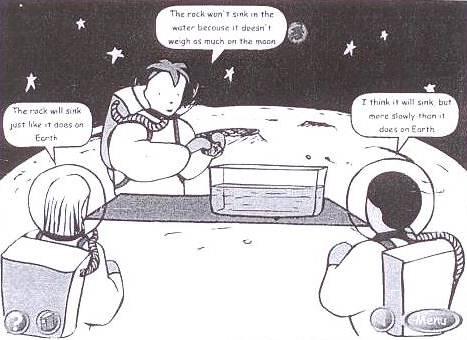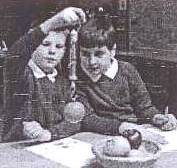Force/Lesson on Force
Expectations at Key Stage 2
Pupils should be taught:
a) about the forces of attraction and repulsion between magnets, and about the forces of attraction between magnets and magnetic materials.
b) that objects are pulled downwards because of the gravitational attraction between them and the Earth.
c) about friction, including air resistance, as a force that slows moving objects and may prevent objects from starting to move.
d) that when objects (for example, a spring, a table) are pushed or pulled, an opposite pull or push can be felt.
e) how to measure forces and identify the direction in which they act.
Expectations at Key Stage 3
Force and linear motion
a) how to determine the speed of a moving object and to use the quantitative relationship between speed, distance and time.
b) that the weight of an object on Earth is the result of the gravitational attraction between its mass and that of the Earth.
c) that unbalanced forces change the speed or direction of movement of objects and that balanced forces produce no change in the movement of an object.
d) ways in which frictional forces, including air resistance, affect motion (for example, streamlining cars).
Force and rotation
e) that forces can cause objects to turn about a pivot.
f) the principle of moments and its application to situations involving one pivot.
Force and pressure
g) the quantitative relationship between force, area and pressure and its application (for example, the use of skis and snowboards, the effect of sharp blades, hydraulic brakes).
Plenary Activities
This cartoon is an ideal ‘starter’ to elicit initial ideas, to promote discussion and to act as a stimulus for practical investigation of the range of ideas suggested… Consider possible intervention strategies/practical activity.
This cartoon is a useful plenary activity – obviously it’s difficult to replicate in the classroom, but as a discussion based around a ‘thought experiment’ will help children re-assess their understanding and provide useful formative assessment evidence.
The distinction between ‘power’ and ‘energy’
Representing Forces
| Drawing Demand | Conceptual Demand |
| Single Arrow | Single Arrow |
| Direction of arrow | Force has direction |
| Straightness of arrow | Forces act in straight lines |
| Length of arrow | Magnitude of force |
| Location of arrow’s tail | Objects as point masses |
| Two Arrows | Two Arrows |
| Arrows drawn head to head (equal length) | Balanced forces (zero net force, body being stationary or moving at constant velocity) |
| Unequal lengths | Unbalanced forces |
| Arrows drawn in the same direction | Additive forces in same direction |
| Arrows drawn in different directions | Both forces influence the resultant movement |
| Multiple Arrows | Multiple Arrows |
| Arrows drawn in various directions to represent all the forces acting on the body |
Direction of individual arrows combined to determine total force; equal and opposite forces cancel one another out. With unequal opposite forces, the net force is the smaller subtracted from the larger. |
Falling Object
In the first instance, the object is stationary, held in place – with gravity being the only other force acting on it. As it released, the sudden massive imbalance of forces causes the object to accelerate towards the ground. As it starts to move, it pushes through the air causing air resistance which acts in an opposing direction to the gravity. In the early stage of the descent, the forces are still somewhat unbalanced and while the object does continue to accelerate towards the ground – it does so at a slower rate of acceleration at the start of the fall. As the object gets faster, air resistance continues to increase, gradually reducing the rate of acceleration until it comes to the point where the upward force of air resistance is the same as the downward force of gravity. At this point the forces are balanced and the object ceases to accelerate. It continues to fall at the velocity (speed) it was travelling when balance point was reached. This is known as the TERMINAL VELOCITY.
Self-Assessment: Aeroplane
Ask your students to draw the arrows at the point of take-off, mid-flight and as it comes in to land following the conventions discussed in slides 16-18.
Measuring Forces
Teaching specific skills associated with an understanding of Forces. KS2 – e). how to measure forces and identify the direction in which they act. The Newton Meter and the home-made Newton meter.




